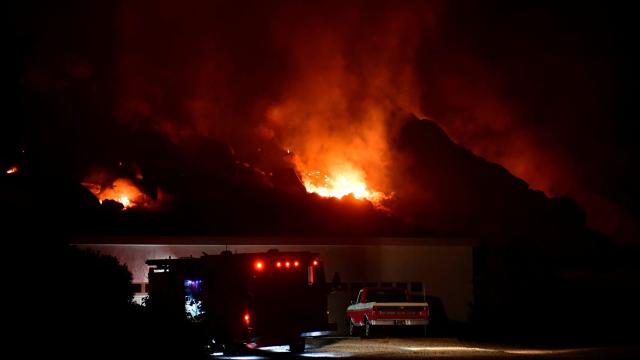Late last week, President Donald Trump denied California a vital relief package to help the state recover from six recent massive wildfires. Hours afterward, he flipped, deciding to award the requested aid after all. My neck is still sore from the whiplash.
Trump reversed his decision after a phone call with California Governor Gavin Newsom — the Democrat who originally requested the relief — as well as chats with House Republican Minority Leader Kevin McCarthy and Republican state Senator Andreas Borgeas, both of whom represent districts affected by the fires.
It’s not unusual for a request package of this kind to be approved. According to Samantha Montano, an assistant professor of emergency management and disaster science at University of Nebraska Omaha, 75% of instances of requested aid for major disasters has been accepted between 1953 and 2017. That makes the initial denial weird. But there are other details that make Trump’s reversal pretty notable.
In flip-flopping, Trump ignored federal regulations under which state governors are instructed to file formal appeals to the Federal Emergency Management Agency if the initial request is denied. Shortly after Trump’s original rejection, Newsom tweeted that he planned to appeal it, presumably using these official channels, but the rollback happened before he had the chance.
In fact, on a remote call into the Milken Institute’s Global Conference on Friday, he said he didn’t even get to informally ask the president to rethink his decision.
“I couldn’t even finish the ask. He said, ‘You got it. I’m signing off on that major disaster declaration in California,” Newsome said.
Former FEMA Administrator Craig Fugate told E&E News that to his knowledge, this is the first time a president has ever reversed a decision on such a disaster declaration without a governor’s appeal. It’s not clear exactly why Newsom’s ask was originally shot down. He didn’t ask for a specific amount of funds, but in his Sept. 28 request to the Trump administration, the California governor said he expects the damages from the six fires — the Valley Fire in San Diego, the El Dorado Fire in San Bernardino County, the Slater Fire in Siskiyou County, the Oak Fire in Mendocino County, the Bobcat Fire in Los Angeles, and the Creek Fire — to exceed $US229 ($323) million. That should have been enough to qualify for FEMA aid, as under the agencies’ regulations, disasters which cause upwards of $US58 ($82) million to clean up and repair costs are eligible.
In a statement on Thursday, FEMA said the government had originally denied the request because the agency already approved another major disaster declaration for California’s wildfires in August.
“FEMA approved four Fire Management Assistance Grants in five counties for wildfires included in the state’s disaster request, allowing reimbursement to state, local governments and other eligible agencies for 75% of firefighting, evacuation and sheltering costs,” the statement said.
The agency also said the six fires in Newsom’s more recent request “were not of such severity and magnitude to exceed the combined capabilities of the state, affected local governments, voluntary agencies and other responding federal agencies.”
Now that California has received its major disaster declaration, the federal government will help fund recovery, including staffing, cleanup and rebuilding costs. Over his tenure as president, Trump has approved 68 aid packages for California wildfires.
Neither Trump nor FEMA have publicly explained why they reversed their rejection so quickly, but it may have to do not only with the appeals from representatives and Newsom, but also the upcoming presidential election. One Congressional Research Service report found that from 1974 to 2016, presidents have turned down requests for disaster relief less frequently during election years since forcing potential voters to suffer isn’t a winning strategy.
Whatever the reason, the reversal is good. Still, it likely won’t be enough for California to recover from this year’s wildfire season, which is the worst in the state’s history and has claimed 4.1 million acres of land. As of Friday afternoon, 22 blazes are still ripping through the state, and much of the state faces extreme fire weather through Wednesday morning that could cause fires to grow and spark new ones. With more fires on the way, officials are already planning to ask the federal administration for yet more financial relief.
Editor’s Note: Release dates within this article are based in the U.S., but will be updated with local Australian dates as soon as we know more.
